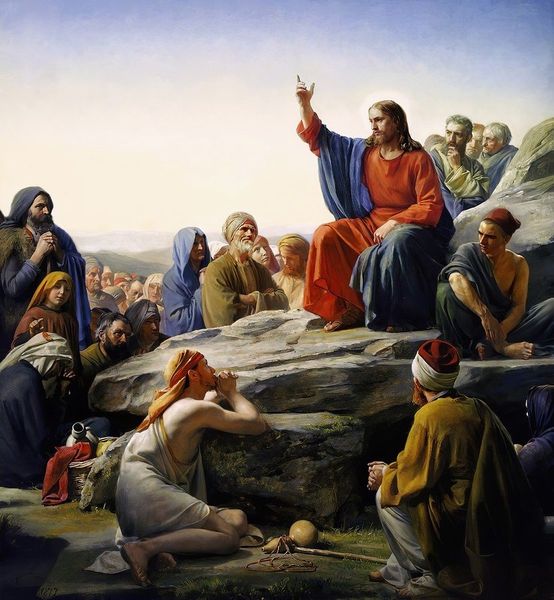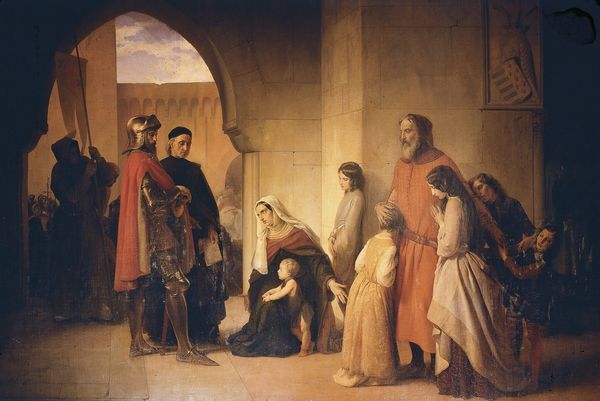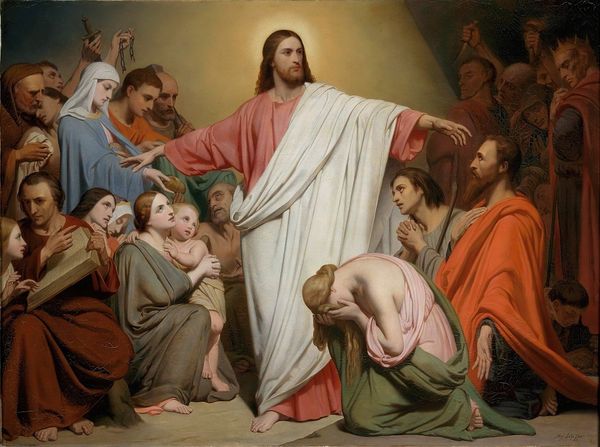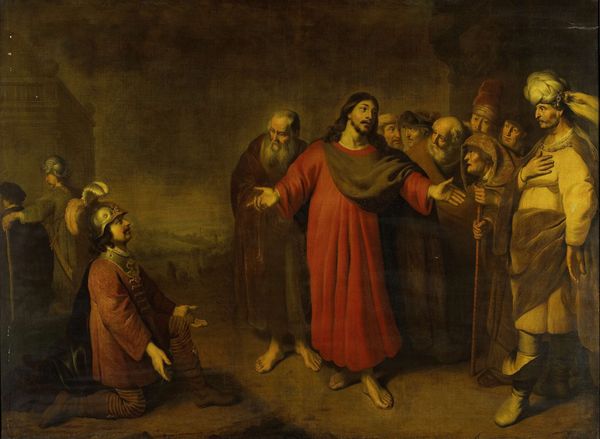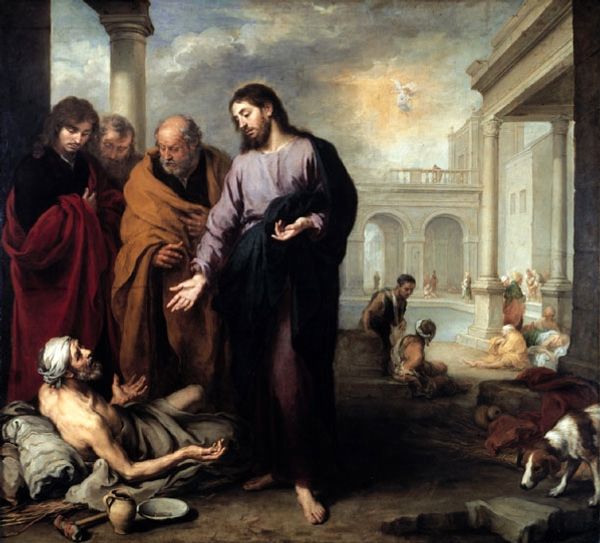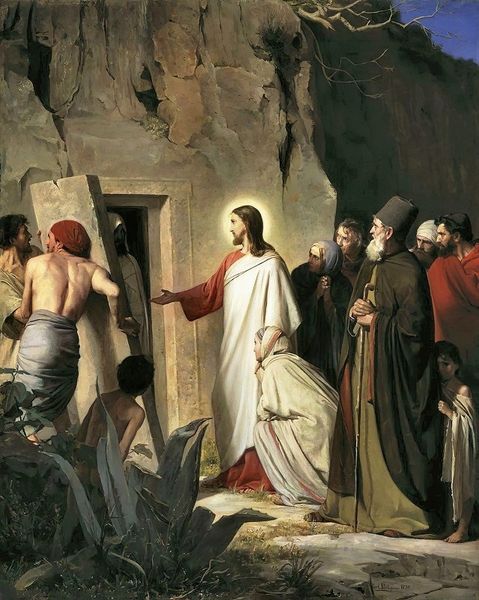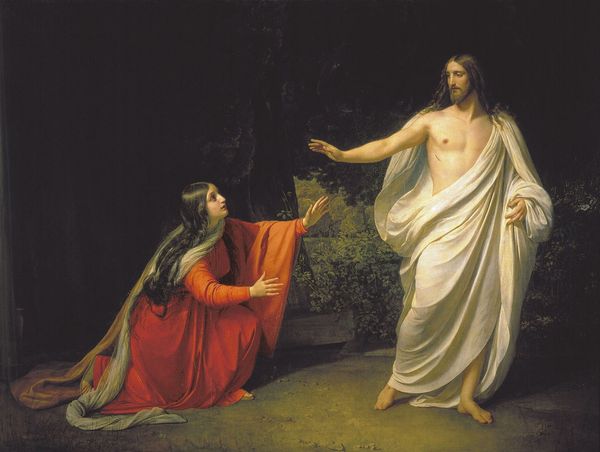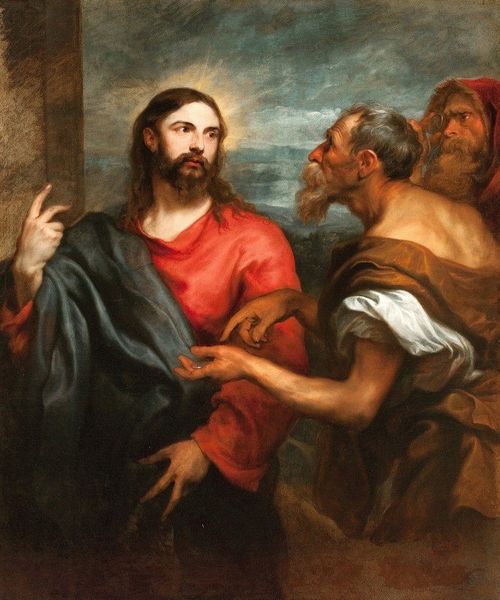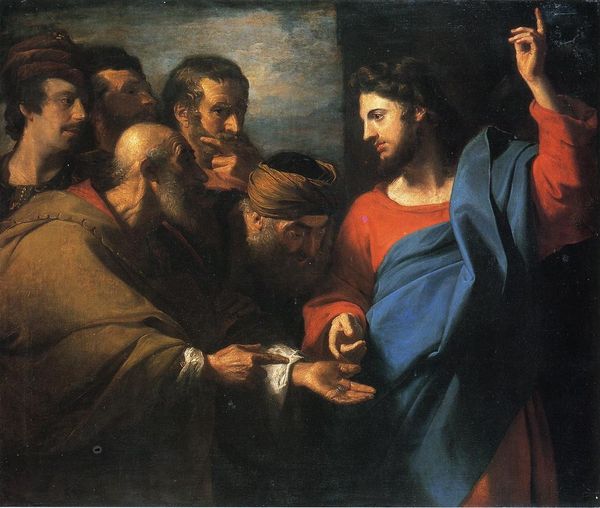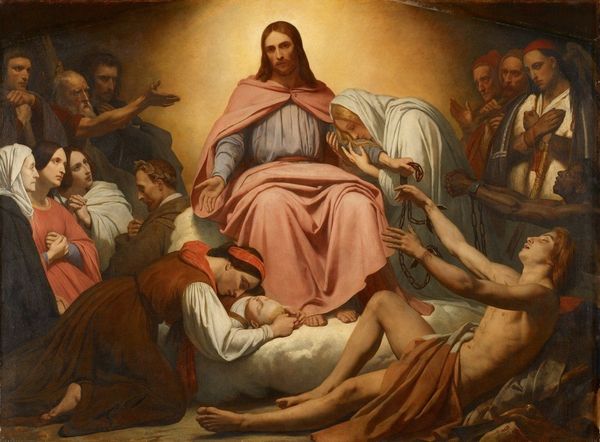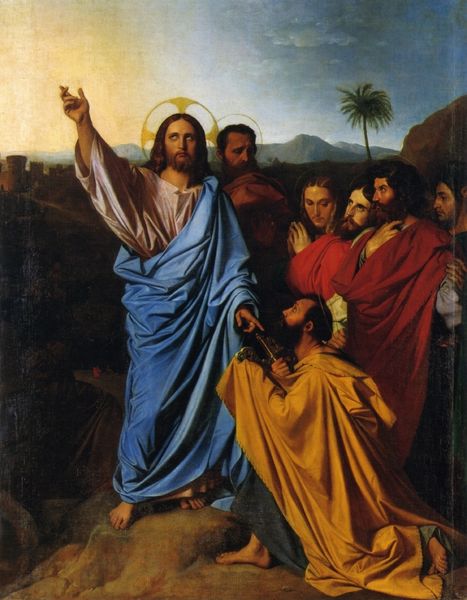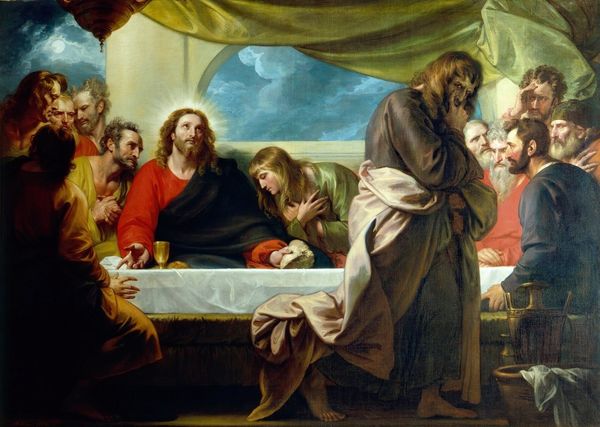
Copyright: Public domain
Léon Bonnat painted ‘The Resurrection of Lazarus’ in France at a time of great social change. Bonnat's academic style, deeply rooted in tradition, often clashed with the avant-garde movements of his era. Note the theatrical composition, reminiscent of stage plays popular at that time, with Lazarus emerging dramatically from his tomb, swathed in white. Bonnat’s focus on realism, evident in the figures’ emotional intensity, invites viewers to engage with the biblical narrative on a personal level. The painting reflects the 19th-century fascination with spiritual and scientific inquiry. Religious subjects were common in art, but Bonnat's approach was to humanize these figures. He trained at the École des Beaux-Arts, and would later become its director, influencing generations of artists. As historians, we can examine Bonnat’s artistic choices within the context of his time, using primary sources like exhibition reviews or letters. This unveils the complex dialogue between art, religion, and society in 19th-century France.
Comments
No comments
Be the first to comment and join the conversation on the ultimate creative platform.
